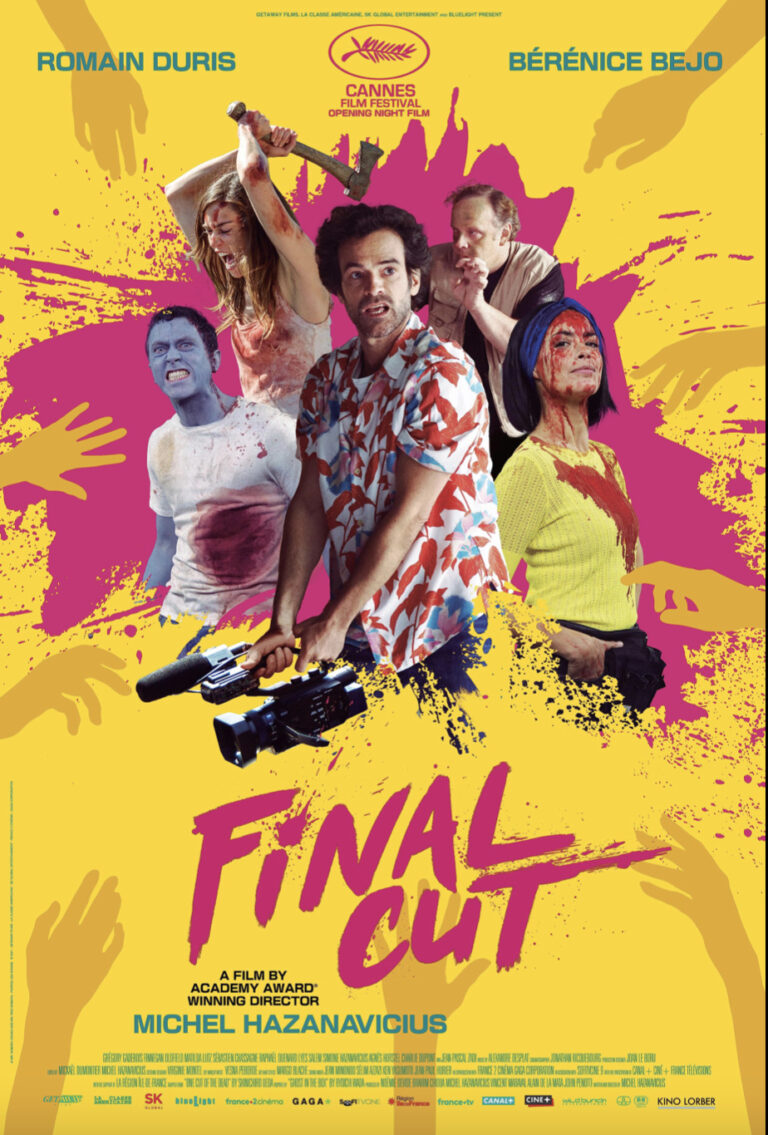
“Final Cut,” Cannes’ opening night film, finally made its debut for U.S audiences at the Tribeca Festival. Its Oscar-winning director Michel Hazanavicius (“The Artist”) has attempted to remake a delightful and innovative Japanese movie that premiered in 2017 called “One Cut of the Dead” which had a massive box office success in Japan.
But what’s the purpose of remaking an already successful movie? One of the greatest calamities of the movie industry is the remake. Uninspired and lazy Hollywood producers take successful foreign films made in a language other than English and find it’s a cheap shortcut to making a bundle of money. Sadly we have seen mostly failed attempts. Of course, some could say getting a taste of flavors from a different culture and country arguably, makes it more accessible to an English-language audience. That is the challenge that Hazanavicius had to face.
The film was originally titled “Z“—but the title was changed to “Coupez!” (cut!) because the letter Z has become a symbol used by Russians to support the war against Ukraine.
“Final Cut” is also a remake about a remake: within the story, a new French streaming platform has hired small-time music video director Remi (Romain Duris) to recreate the original for French TV. Remi is a hack French director whose motto is “fast and cheap.” On the surface, the remake appears to adopt the same general premise and narrative structure as “One Cut of the Dead,” pulling over to their universe echoes of the other. Both open with a 30-minute single take of a movie crew filming a zombie thriller; during that time, the crew and the actors get attacked by actual zombies.
For that reason, the first 30 minutes of “Final Cut” get close to being a one-note joke about the cheesiness of horror productions, with the bad acting, overwrought cinematography, and generally cheap nature in many ways. It’s a film that initially requires great patience from the audience.

But just like the second act of the original film, “One Cut of the Dead,” the movie captures the savviest choices of how a live broadcast angle is included in the inside production — the one-take concept has a different purpose in this story than just showing off. “Final Cut” uses the way an audience follows the story and immerses itself in the challenge of a single take to then make you appreciate all that goes on with what was happening behind-the-scenes.
The film could have failed with a different director. If it was done with a lack of cleverness and flawed ideas, it could have been a “The Blair Witch Project” with a $100 million budget. But as we all know, the path of the original film was successful because it got away with a lot more due to its low budget and lack of resources, but smart ideas.
Director Hazanavicius, who also wrote the screenplay in addition to directing, has intentionally barely modified the material, going beat by beat through the jokes that can really only be funny once, even if it’s recurrent jokes with Remi (Duris) pushes the film closer into being a “Living in Oblivion”-style of a filmmaking parody. That’s where Hazanavicius shows his knack for comedy. Duris, an actor more frequently associated with intense dramas such as Jacques Audiard’s “The Beat That My Heart Skipped” manages to make Remi more than simply a desperate creative tearing his hair out.
Hazanavicius also set up other engaging characters such as Remi’s supportive wife Nadia (real-life Hazanavicius’ wife Bérénice Bejo), who steers clear of sets for a reason. There’s also his film purist daughter Romy (Simone Hazanavicius). And he offers a small cameo by Yoshiko Takehara, who starred in the original to pay homage to it.
Yet, like the original, the remake has its heart in the right place. That may well be enough for this smart remake. The undefinable joy of doing your best at guerrilla style of filmmaking makes it more of a sparkling and funny satire. Even though I felt it was not necessarily Cannes opening night material, Hazanavicius weaves the same magical spell of the original into a French soup that we can be satisfied with.
Grade : B+
Check out more of Nobuhiro’s articles.
Here’s the trailer of the film.

